- Best Soaker Hose Options Your Yard Truly Needs This Year - January 5, 2024
- Best Tomato Planters You Should Really Consider for Your Garden - December 21, 2023
- Best Home Depot Tomato Cages to Support Your Plants - December 16, 2023
If you’re looking for something exceptional to grow in your garden or to use in a floral arrangement or a cut flower bouquet, look no further than a purple sunflower variety. They look lovely growing outdoors and swaying in the sun and wind, but they also make a stunning flower arrangement or bouquet for special occasions. So, what varieties of sunflowers are purple? Let’s look at a few.
Black Magic
This variety of sunflower produces large petals and flower heads. It is annual sunflower that grows well in warm, sunny weather. Its petals are only vaguely purple in color, they are more burgundy, but sometimes have a tinge of purple shining through.
Chianti
This variety of sunflower features dark red petals growing from purple stems. It is a lovely combination that is ideal for floral arrangements. Chianti is a great option for those who suffer from allergies since it is pollen-less.
Claret
This variety of sunflower is an annual that grows large heads and large petals that can range from burgundy-red to burgundy-purple in color. It is a very showy type of sunflower that is also attractive to birds, bees, and butterflies.
Ms. Mars
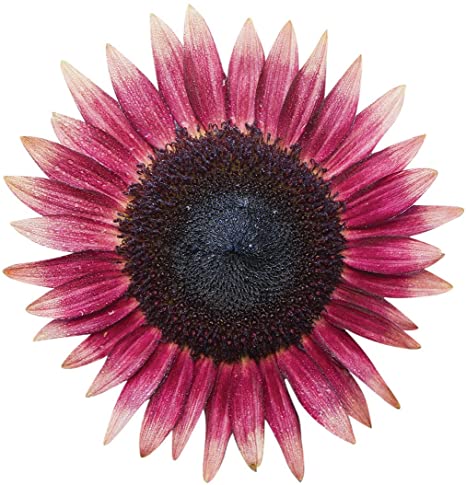
This variety of sunflower stays fairly small (2 feet tall). It features stunning two-toned petals colored in a creamy white and purplish pink. Ms. Mars is an excellent choice to use in a planter or to line the border of a flower bed.
SunFill Purple
This variety of sunflower produces a spectacular seed head that is rimmed with triangular-shaped petals tinged in purple and green. This is the ultimate purple sunflower.
How to Identify Purple Sunflowers
Purple sunflowers look just like any other variety of sunflowers. They have a large brown center filled with seeds and long, thick stems. Except for their purple petals or stems, they feature the looks that are typical of sunflowers.
How to Grow Purple Sunflowers from Seed
Sunflowers are an extremely easy plant to grow from seed; in fact, they are so easy that gardening these flowers are used as fun elementary school projects. The steps are simple but the timing is important: sunflowers should be planted outside only when the chance of frost has passed. Here’s how:
- Prepare a garden bed in soil that drains well and has access to plenty of sunlight
- Set the seeds in the soil an inch deep and 6 inches apart
- Once sprouts are noticeable, trim the number of plants so that the sprouts are 12 inches apart
- Blooms should appear between 80 to 120 days after the seeds have been planted
How to Harvest Purple Sunflowers Seeds
Sunflower seeds can be harvested to grow a new crop of sunflowers and/or to roast and eat the sunflower seeds. The method for harvesting seeds is simple. Here are the steps:
- Choose sunflowers that have blooms turning brown and beginning to die back
- Use a cutting utensil to remove the flower from the stem
- Rub the flower head over a container to remove the seeds (don’t worry if you get petals or leaves mixed in)
- Rinse the seeds
- Separate the seeds from petals and leaves
- Set the seeds on a towel and allow them to dry
- Put the seeds in a labeled container
- Store the container in a place that is cool and dry
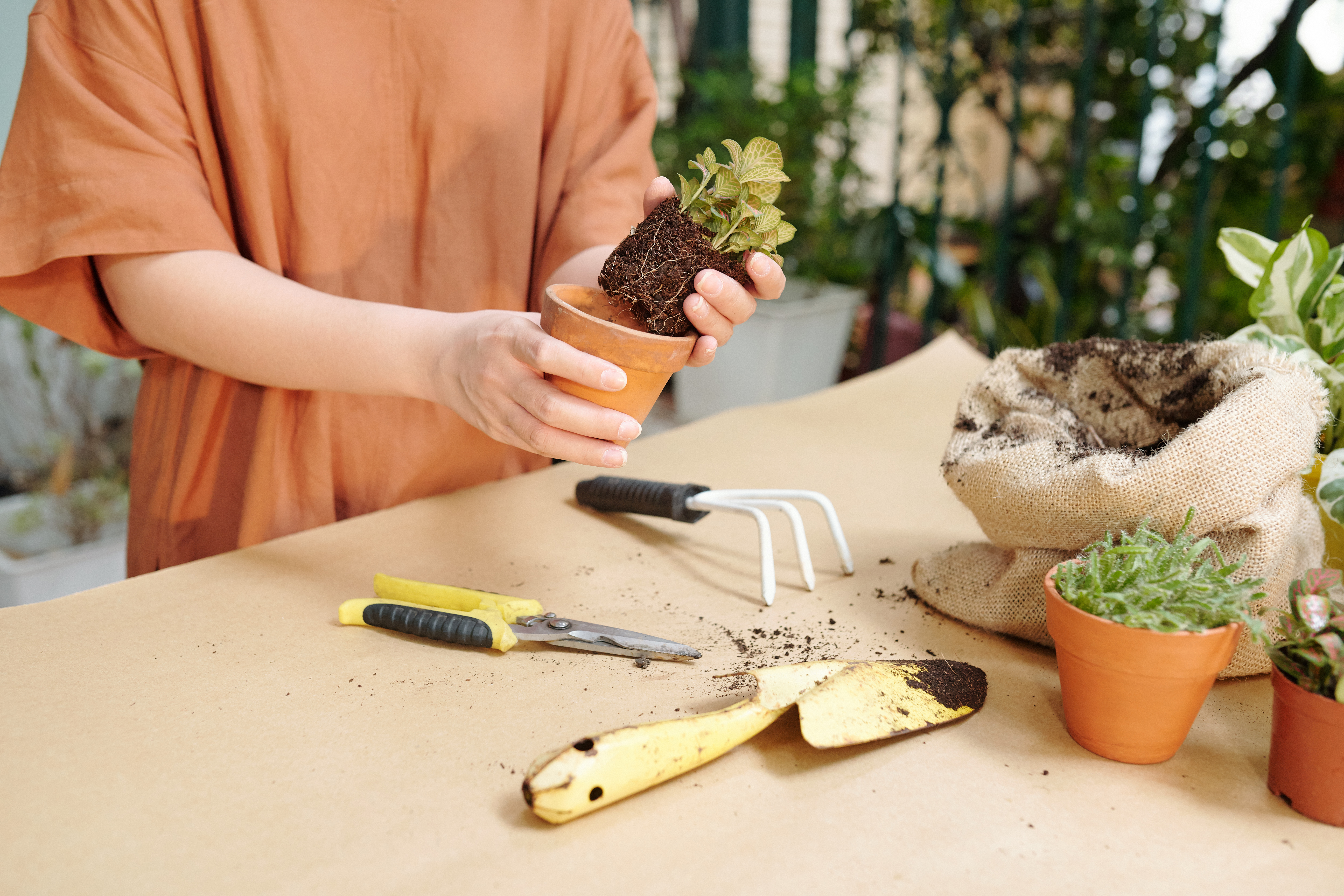
How to Propagate Sunflowers
Perennial sunflowers can also be grown from stem cuttings. This should be done in the spring before the flower has bloomed. Here are the steps for doing this:
- Choose a healthy sunflower (usually a side shoot)
- Use a sterile cutting utensil to cut a 4 to 6-inch stem that has some leaves but no flowers or buds on it
- Slice off the top ½ inch of the cutting
- Remove the lowest set of leaves with a cutting utensil
- Remove all the leaves but two terminal leaves
- Dust the bottom of the cutting with a rooting hormone, if desired
- Put sterile potting soil made from 50% sand and 50% peat moss in a plant container
- Place the cutting in the soil
- Place the plant container in a warm and slightly shaded spot
- Cover the plant with a plastic bag to conserve humidity
- New roots should grow between two and four weeks
- Once the plant is established, it can be transplanted to a permanent garden bed
When to Plant Purple Sunflowers
Sunflowers can be planted outdoors only after the threat of frost has passed for the season.
How to Plant Purple Sunflowers
Dwarf sunflower varieties can be kept in containers, but all other sunflower varieties should be transplanted to a garden bed once they are big enough and the weather is warm enough. Here’s how to do this:
- Select an area that has well-draining soil and receives plenty of sunlight throughout the day
- Acclimatize the sunflowers to sunlight before planting them in a garden bed (they should be able to handle six hours of direct sun)
- Gently transplant the sunflowers to the garden bed
- Care for as a mature plant
Best Purple Sunflower Fertilizer
Use a liquid fertilizer such as Hunt’s Harvest Plant Fertilizer to feed sunflowers. They are heavy feeders and will benefit from some fertilizer during their growing season.
Purple Sunflower Soil Requirements
Provide your sunflowers require plenty of loose and well-draining soil for their long roots to grow. The soil should also have a slightly acidic pH level.
Purple Sunflower Light Requirements
Sunflowers should be set in an area that receives at least eight hours of full sun every day.
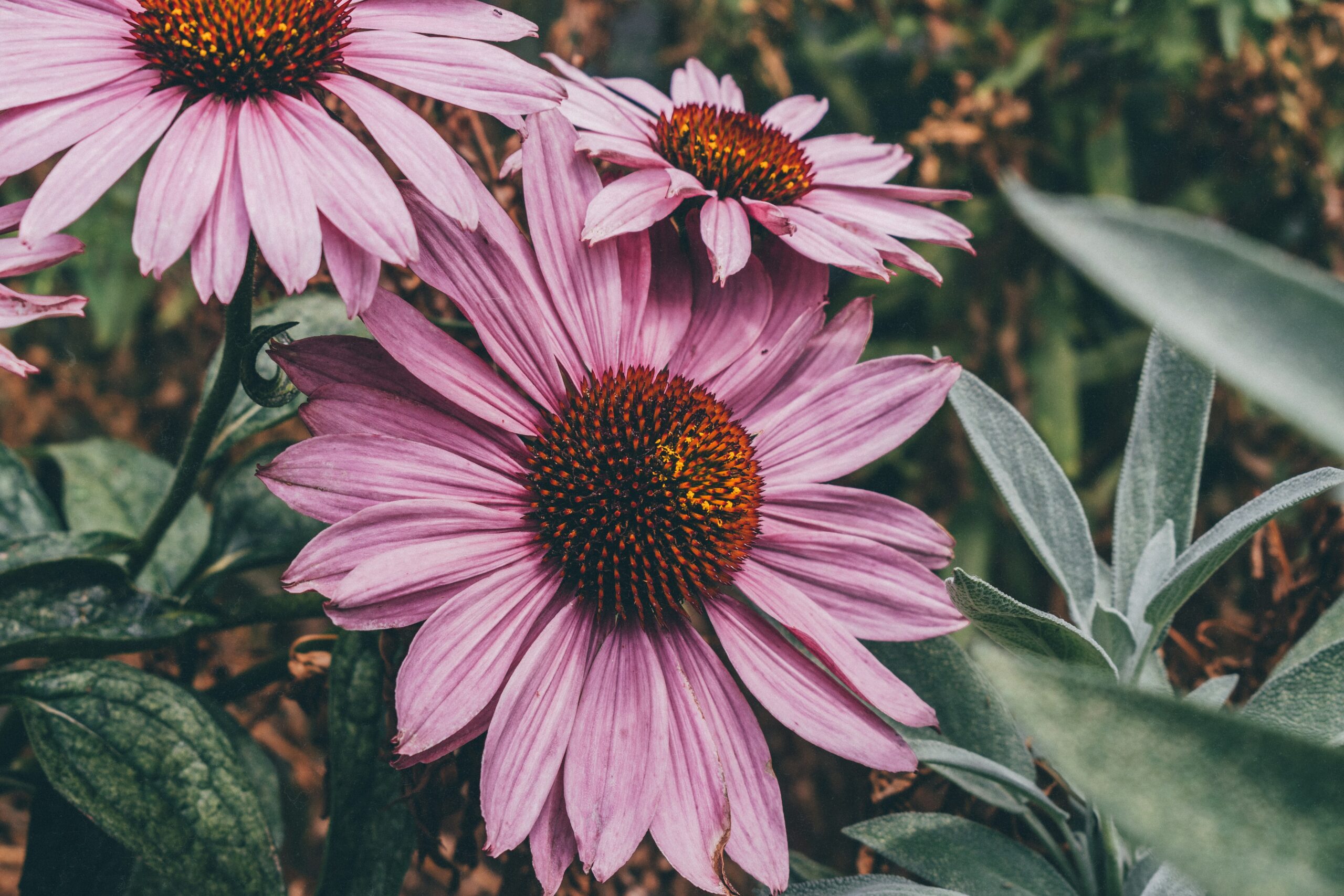
Purple Sunflower Water Requirements
Sunflowers are drought tolerant and don’t take well to overwatering. This is why their soil must be well-draining. Sunflowers should only be watered when the top layer of their soil is dry.
Best Purple Sunflower Companion Plantings
Since sunflowers are often referred to as the fourth sister of the famous three sisters of companion crops, it is easy to suggest that they be planted next to squash, corn, and climbing beans. These four plants have a symbiotic relationship where they provide either nutrients, protection, or beneficial insects for each other.
While corn, squash, and climbing beans are all excellent choices to use as companion plantings with sunflowers, other plants can benefit from being planted next to sunflowers or will benefit the sunflower. Some of these include the following plants.
Geraniums
These aromatic flowers attract pollinators and repel harmful pests.
Lettuce
Sunflowers will shade the lettuce to prevent its delicate leaves from burning in the hot sun.
Lavender
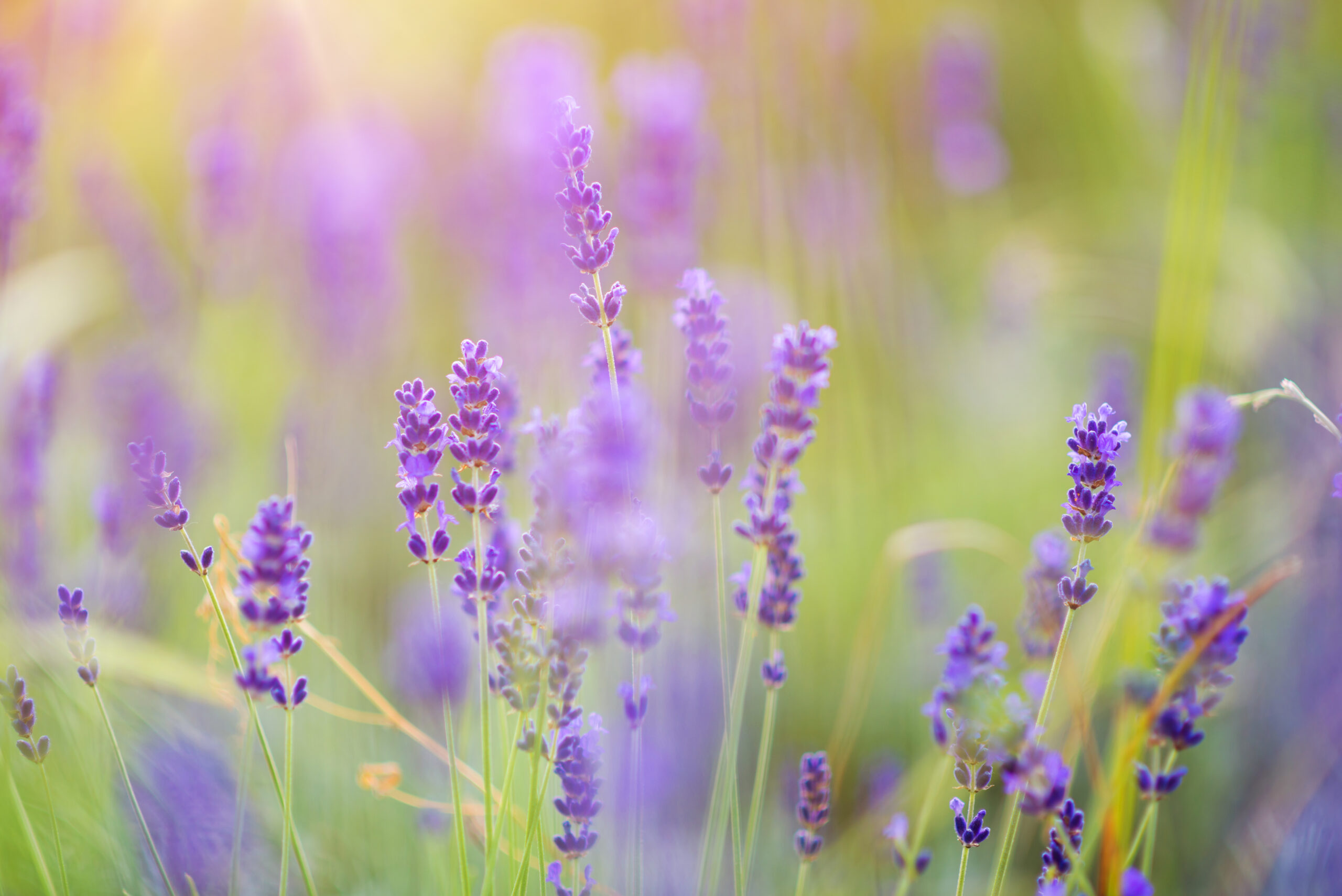
An aromatic flower such as lavender attracts more pollinators.
Marigolds
These flowers attract ladybugs, which in turn, will handle pests such as aphids and black flies.
Oregano
Flowering oregano attracts beneficial insects that will naturally protect other plants from harmful insects.
Rosemary

This herb is attractive to pollinators and it can grow large enough to become a support system to other plants.
Purple Sunflower Treatments and Maintenance
Sunflowers are apt to face diseases and pest infestations. The best way to deal with these issues is to learn what is most likely to attack sunflowers, how to identify these diseases and pests, how to prevent each type of infestation, and how to treat a plant that is facing an infestation.
This is a list of just some of the most common issues faced by sunflowers and how to treat them:
Alternaria
This infestation is a fungal disease that usually appears during hot and humid weather. Symptoms of this type of infestation are dark brown or black lesions and broken stems. To deal with this problem, apply a fungicide to the infected plants.
Banded Sunflower Moth
Signs of this type of infestation are webbing and empty seeds from where larvae have been feeding. To deal with this problem, apply an insecticide to the infected plants.
Downy Mildew
This infestation appears on leaves as yellow spots and gray fuzz. The best way to prevent this problem is to provide the plant with plenty of space, air circulation, and sunlight. Fungicides may be used to slow down its spread, but since it isn’t a true fungal infection, fungicides do not prevent or completely eradicate it.
Sunflower Beetle
Signs of this type of infestation are empty kernels and enlarged seeds. To deal with this problem, apply an insecticide to the infected plants.
Sunflower Moth
Signs of this type of infestation are webbing on the head of the sunflower and empty kernels. To deal with this problem, apply an insecticide to the infected plants.
Sunflower Stem Weevil
Signs of this type of infestation are leaf damage and weakened stalks. To deal with this problem, apply an insecticide to the infected plants.
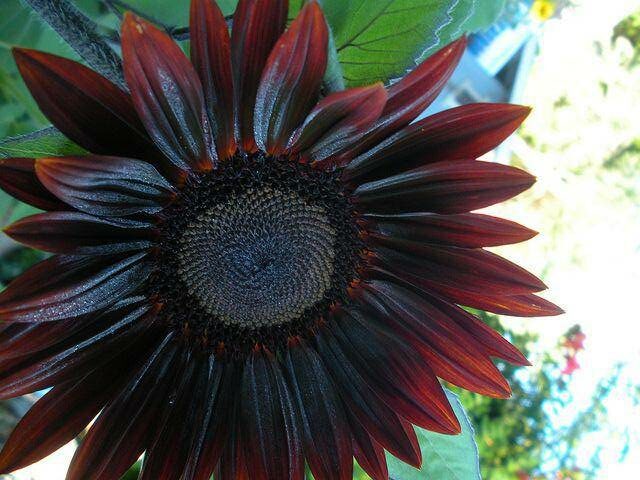
Where to Purchase Purple Sunflowers Online
Look for these pretty flowers in seed form at one of these online shops:
Research Citations
- She Said Sunflower
- American Meadows
- Sunflower Selections
- Sarah Raven
- Shoot Gardening
- Gardenia
- Our Everyday Life
FAQs
Answer: The color of a sunflower does not determine if it is an annual or a perennial plant. So, there are purple sunflowers that are perennial plants and there are purple sunflowers that are annual plants.
Answer: Features of an Annual Sunflower are:
• Plenty of large seeds
• Shallow roots that resemble strings
• Single stemmed flowers
• Blooms that are produced within the first year the seeds are planted
• They grow quickly after they have been planted
• They produce sprouts late in the spring
Features of a Perennial Sunflower are:
• Moderate amounts of small seeds (non-hybridized varieties)
• Deep roots that have rhizomes and tubers attached to them
• Stems that grow in clusters
• Small seed heads
• Blooms will not grow until two years after the seeds are planted
• They grow slowly after they have been planted
• They produce sprouts early in the spring
Answer: Sunflower seeds are a versatile crop. They can be made into nutritious and delicious food for your favorite pets or your favorite people. Here are just a few ideas of what to do with your harvest of sunflower seeds.
Homemade Roasted Sunflower Seeds
Sesame Sunflower Seed Crunch
Sunflower Seed Butter
Sunflower Seed Suet Cake
Answer: No, they are not. Nuts are a single-seeded fruit that is contained within a hard shell. While this does mean that nuts are seeds, it does not mean that all seeds are nuts, and this is the case with sunflower seeds.
Answer: Yes, but that depends on who you ask. Birds prefer to eat oilseed, while we humans prefer non-oilseed.
Answer: Yes, this is actually a popular method to get the color desired for a bouquet or floral arrangement. Here is the method for doing this:
• Select a sunflower that is lightly colored or white
• Cut the sunflower so that it has a sturdy stem
• Choose a type of dye (Koch Color or regular food color will work)
• Place the dye in a container filled with water
• Set the sunflowers in the water and watch them slowly change colors
Answer: Yes, they do. You can find Red Sunflower Varieties, White Sunflower Varieties, Pink Sunflower Varieties, and Orange Sunflower Varieties available to grow in your own garden.
In Conclusion
Purple sunflowers are another reminder to us that we need to stop and enjoy the beauty of nature. These flowers showcase the power of nature to inspire us to be colorful and versatile, to encourage us to embrace our unique qualities, and to encourage each other to vibrancy in life. There is just something about their natural beauty that can speak to the soul and move us toward purpose.

